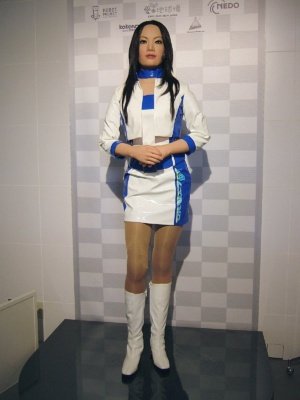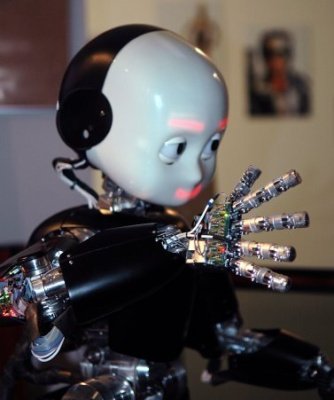
In simple terms, a robot is a mechanical device that is intended to do the work a human would normally do. Robots can be as simple as a mechanical arm that helps assemble cars in a car assembly plant, or as complicated as a two-legged mechanical robot that looks very much like a real person.
Robots are getting more and more sophisticated each day. The robot above is named ASIMO. He was created by Honda and is a little over 4 feet tall. He can walk and even run on two legs. Asimo can recognize moving objects flying through the air.
He can recognize people’s faces and greet them by name. He can distinguish sounds and “hear” too. Asimo, like most robots, is made possible by very sophisticated computers. The name ASIMO stands for “Advanced Step in Innovative Mobility”.
Although Honda will not admit it, it is more likely that Asimo is named after the famous science fiction writer, Isaac Asimov, who wrote the book I, Robot, a book that listed the Three Laws of Robotics for the first time (First Law – a robot may not injure a human. Second Law – a robot must obey orders. Third Law – a robot must protect its own life as long as the protection does not conflict with the First or Second law). Isaac Asimov is also credited with coming up with the word “robotics”. The first recorded mention of the word was in Asimov’s 1941 book, “Liar!”, after which Asimov was surprised to learn that the word had not already existed (many believe the word had also been mentioned in a 1921 play in Czechoslovakia).
One of the first drawings of a robot was made by the famous painter, Leonardo da Vinci in 1495. da Vinci’s notebooks, which were discovered in 1951, contained drawings of a mechanical humanoid that could sit up, wave its arms, and move its head and jaw. Nobody knows if Leonardo actually attempted to build the device.
Later, in 1926, Westinghouse Electric Corporation created Televox, the first robot put to useful work. They followed Televox with several other simple robots, including one called Rastus and another named Elektro. It was about this time that computers came into being, an innovation that would let people build much more powerful robots.
Today, robots have become commonplace and are even beginning to appear in people’s homes. The Roomba vacuum cleaner appeared in 2002 and is now living in almost 3 million homes across the world. Robots are also commonly used to detonate bombs (a job much too dangerous for humans) and to explore far away planets.
Many believe that robots will appear in every home within the next 10 years.
Image Credits
In-Article Image Credits
Actroid-DER, developed by KOKORO Inc via Wikimedia Commons with usage type - GNU FreeiCub robot at the Genoa science festival in 2009 via Wikimedia Commons by Lorenzo Natale with usage type - GNU Free. October 2009
ASIMO (Advanced Step in Innovative Mobility) by Honda via Wikimedia Commons with usage type - GNU Free
Featured Image Credit
ASIMO (Advanced Step in Innovative Mobility) by Honda via Wikimedia Commons with usage type - GNU Free









